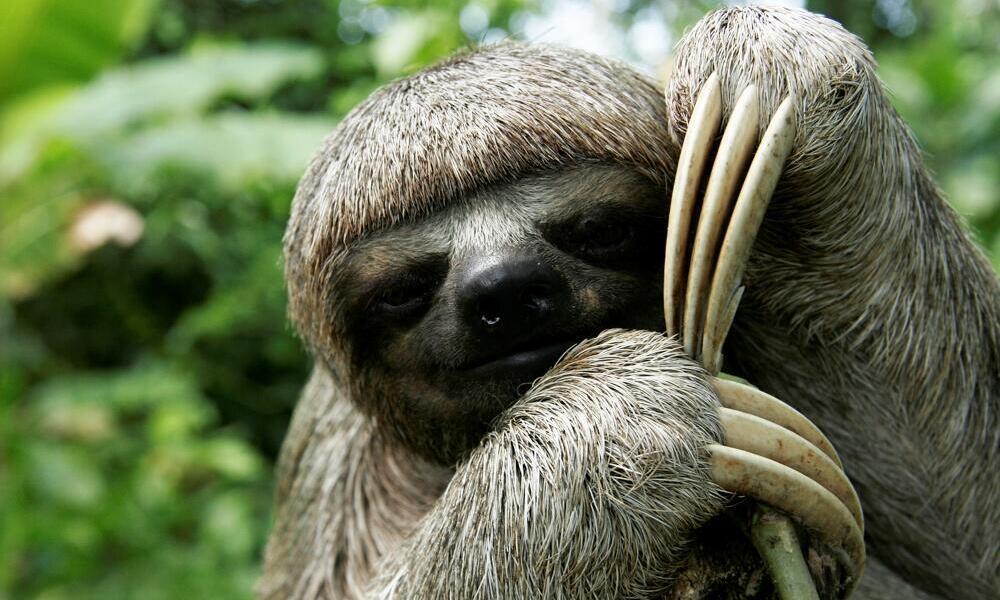While cheetahs and falcons get all the glory for speed, some animals take life at a much more leisurely pace. From sloths to snails, the slowest animals in the world have adapted to survival strategies that prioritize energy conservation over speed.
In this post, we'll explore the top slowest-moving animals, why they move so slowly, and how their sluggishness actually helps them thrive in the wild.
1. Three-Toed Sloth (0.24 km/h)
Why So Slow?
- Sloths have an extremely low metabolic rate, meaning they digest food slowly and conserve energy.
- Their slow movement helps them avoid detection by predators like eagles and jaguars.
- They spend most of their lives hanging upside down in trees, only coming down once a week to relieve themselves!
Fun Fact: Algae grow on their fur, giving them a greenish tint that acts as camouflage.
2. Garden Snail (0.048 km/h)
Why So Slow?
- Snails move by gliding on a muscular "foot" that secretes mucus, which is effective but not fast.
- Their slow pace helps them conserve moisture and energy in dry environments.
Fun Fact: Some snails can sleep for up to three years in extreme conditions!
3. Star-Nosed Mole (0.8 km/h Underground)
Why So Slow?
- While they can swim surprisingly fast, star-nosed moles move slowly when tunneling underground.
- Their unique nose helps them detect prey quickly, reducing the need for speed.
Fun Fact: They have the fastest foraging response of any mammal—finding and eating prey in under 0.2 seconds!
4. Koala (10 km/h at Top Speed)
Why So Slow?
- Koalas have a low-energy diet (eucalyptus leaves are tough to digest).
- They sleep up to 20 hours a day to conserve energy.
Fun Fact: Baby koalas (joeys) stay in their mother's pouch for six months before climbing onto her back.
5. Manatee (5–8 km/h)
Why So Slow?
- Their large, buoyant bodies make fast movement difficult.
- They graze on sea grass, which doesn't require quick movements.
Fun Fact: Manatees are closely related to elephants!
6. Gila Monster (1.6 km/h)
Why So Slow?
- This venomous lizard stores fat in its tail, reducing the need for frequent hunting.
- It relies on ambush tactics rather than speed to catch prey.
Fun Fact: Gila monsters can survive on just three large meals a year!
7. Banana Slug (0.3 km/h)
Why So Slow?
- Like snails, slugs rely on mucus to move, which isn't speedy.
- Their bright yellow color warns predators they taste bad.
Fun Fact: They are the second-slowest animal after the garden snail.
8. Loris (1.2 km/h)
Why So Slow?
- Slow movement helps them stay undetected by predators.
- They have a toxic bite, so they don't need to flee quickly.
Fun Fact: They are one of the few venomous mammals!
Why Are Some Animals So Slow?
Slow animals have evolved to conserve energy, avoid predators through stealth, or rely on other defenses (like venom or bad taste). While they may not win any races, their slow lifestyles help them survive in their unique environments.
Final Thoughts
From the three-toed sloth to the banana slug, the slowest animals in the world prove that speed isn't everything. Sometimes, taking it slow is the best survival strategy!
